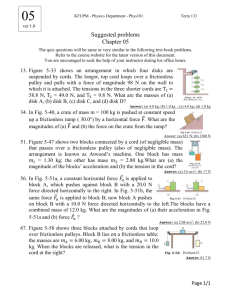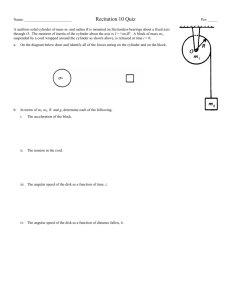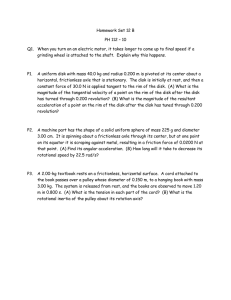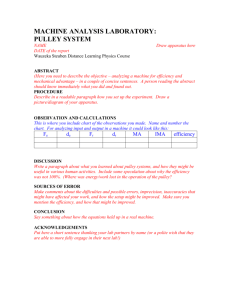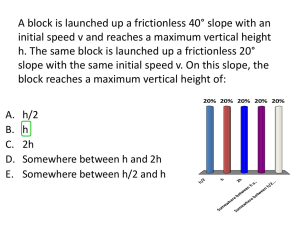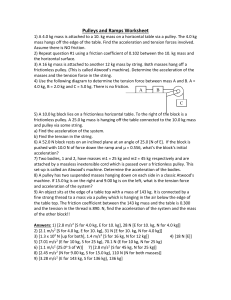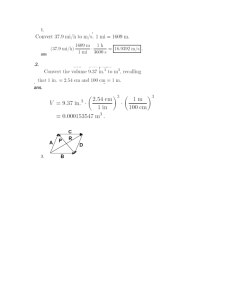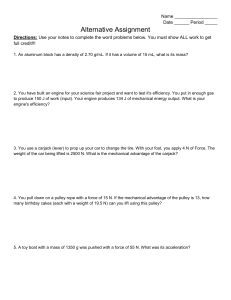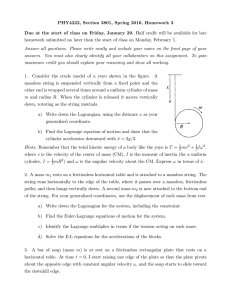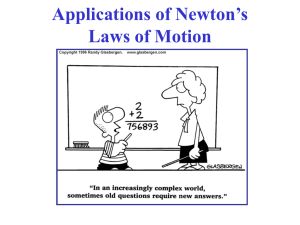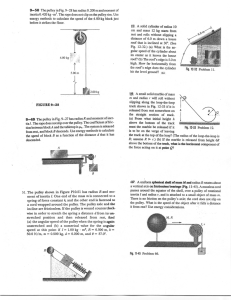PHY 2053, Spring 2009, Quiz 9 — Whiting .
advertisement
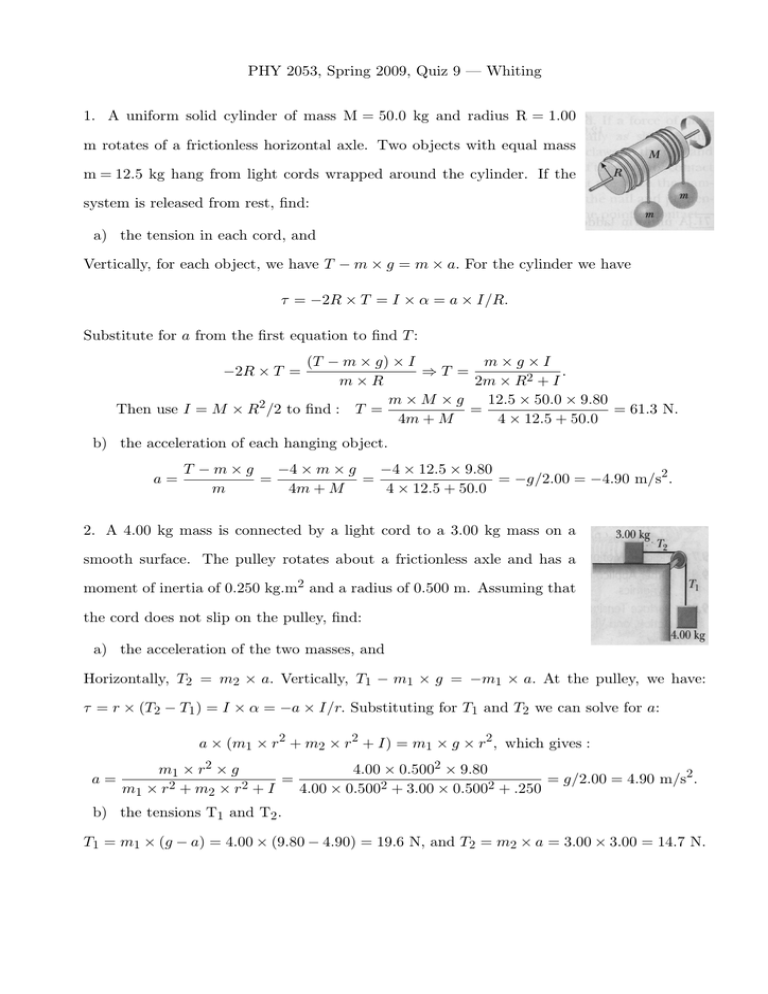
PHY 2053, Spring 2009, Quiz 9 — Whiting 1. A uniform solid cylinder of mass M = 50.0 kg and radius R = 1.00 m rotates of a frictionless horizontal axle. Two objects with equal mass m = 12.5 kg hang from light cords wrapped around the cylinder. If the system is released from rest, find: a) the tension in each cord, and Vertically, for each object, we have T − m × g = m × a. For the cylinder we have τ = −2R × T = I × α = a × I/R. Substitute for a from the first equation to find T : (T − m × g) × I m×g×I ⇒T = . m×R 2m × R2 + I m×M ×g 12.5 × 50.0 × 9.80 Then use I = M × R2 /2 to find : T = = = 61.3 N. 4m + M 4 × 12.5 + 50.0 −2R × T = b) the acceleration of each hanging object. a= T −m×g −4 × m × g −4 × 12.5 × 9.80 = = = −g/2.00 = −4.90 m/s2 . m 4m + M 4 × 12.5 + 50.0 2. A 4.00 kg mass is connected by a light cord to a 3.00 kg mass on a smooth surface. The pulley rotates about a frictionless axle and has a moment of inertia of 0.250 kg.m2 and a radius of 0.500 m. Assuming that the cord does not slip on the pulley, find: a) the acceleration of the two masses, and Horizontally, T2 = m2 × a. Vertically, T1 − m1 × g = −m1 × a. At the pulley, we have: τ = r × (T2 − T1 ) = I × α = −a × I/r. Substituting for T1 and T2 we can solve for a: a × (m1 × r2 + m2 × r2 + I) = m1 × g × r2 , which gives : a= m1 × r2 × g 4.00 × 0.5002 × 9.80 = = g/2.00 = 4.90 m/s2 . 2 2 2 2 m1 × r + m2 × r + I 4.00 × 0.500 + 3.00 × 0.500 + .250 b) the tensions T1 and T2 . T1 = m1 × (g − a) = 4.00 × (9.80 − 4.90) = 19.6 N, and T2 = m2 × a = 3.00 × 3.00 = 14.7 N.

